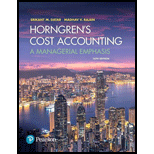
Ethical challenges, global company environmental concerns. Contemporary Interiors (CI) manufactures high-quality furniture in factores in North Carolina for sale to top American retailers. In 1995, CI purchased a lumber operation in Indonesia, and shifted from using American hardwoods to Indonesian ramin in its products. The ramin proved to be a cheaper alternative, and it was widely accepted by American consumers. CI management credits the early adoption of Indonesian wood for its ability to keep its North Carolina factories open when so many competitors closed their doors.
Recently, however, consumers have become increasingly concerned about the sustainability of tropical woods, including ramin. CI has seen sales begin to fall, and the company was even singled out by an environmental group for boycott. It appears that a shift to more sustainable woods before year-end will be necessary, and more costly.
In response to the looming increase in material costs, CEO Geoff Armstrong calls a meeting of upper management. The group generates the following ideas to address customer concerns and/or salvage company profits for the current year:
- a. Pay local officials in Indonesia to “certify” the ramin used by CI as sustainable. It is not certain whether the ramin would be sustainable or not. Put highly visible tags on each piece of furniture to inform consumers of the change.
- b. Make deep cuts in pricing through the end of the year to generate additional revenue.
- c. Record executive year-end bonus compensation accrued for the current year when it is paid in the next year after the December fiscal year-end.
- d. Reject the change in materials. Counter the bad publicity with an aggressive ad campaign showing the consumer products as “made in the USA,” since manufacturing takes place in North Carolina.
- e. Redesign upholstered furniture to replace ramin contained inside with less expensive recycled plastic. The change in materials would not affect the appearance or durability of the furniture. The company would market the furniture as “sustainable.”
- f. Pressure current customers to take early delivery of goods before the end of the year so that more revenue can be reported in this year’s financial statements.
- g. Begin purchasing sustainable North American hardwoods and sell the Indonesian lumber subsidiary. Initiate a “plant a tree” marketing program, by which the company will plant a tree for every piece of furniture sold. Material costs would increase 25%, and prices would be passed along to customers.
- h. Sell off production equipment prior to year-end. The sale would result in one-time gains that could offset the company’s lagging profits. The owned equipment could be replaced with leased equipment at a lower cost in the current year.
- i. Recognize sales revenues on orders received but not shipped as of the end of the year.
- 1. As the
management accountant for Contemporary Interiors, evaluate each of the preceding items (a–i) in the context of the “Standards of Ethical Behavior for Practitioners of Management Accounting andFinancial Management ” Figure 1-7 (page 17). Which of the items are in violation of these ethics standards and which are acceptable?
Required
- 2. What should the management accountant do with regard to those items that are in violation of the ethical standards for management accountants?
Want to see the full answer?
Check out a sample textbook solution
Chapter 1 Solutions
Horngren's Cost Accounting: A Managerial Emphasis (16th Edition)
- A company uses a process cost accounting system. It's Sewing Department completed and transferred out 120,000 units during the current period. The ending inventory in the Sewing Department consists of 40,000 units (20% complete with respect to direct materials and 60% complete with respect to direct labor). Overhead is applied on the basis of direct labor. Determine the equivalent units of production for the Sewing Department for direct materials, direct labor, and overhead assuming the weighted average method. a. 120,000; 120,000; 120,000. b. 120,000; 160,000; 120,000. c. 128,000; 120,000; 120,000. d. 128,000; 144,000; 144,000. e. 128,000; 184,000; 160,000.arrow_forwardAccurate Answerarrow_forwardNonearrow_forward
- The cost of goods sold is found onarrow_forwardMichael transfer a commercial solution general accounting questionarrow_forwardAt the beginning of the year, Addison Company's assets are $236,000 and its equity is $177,000. During the year, assets increase $80,000 and liabilities increase $55,000. What is the equity at year-end?arrow_forward
- Total assets change during that same period?arrow_forwardTotal assets change during that same period? General accountingarrow_forwardOn July 1, the accounts receivable account balance was $77,500. During July, $335,000 was collected from customers on account. Assuming the July 31 balance was $75,400, determine the fees billed to customers on account during July.arrow_forward
 Managerial Accounting: The Cornerstone of Busines...AccountingISBN:9781337115773Author:Maryanne M. Mowen, Don R. Hansen, Dan L. HeitgerPublisher:Cengage Learning
Managerial Accounting: The Cornerstone of Busines...AccountingISBN:9781337115773Author:Maryanne M. Mowen, Don R. Hansen, Dan L. HeitgerPublisher:Cengage Learning Survey of Accounting (Accounting I)AccountingISBN:9781305961883Author:Carl WarrenPublisher:Cengage Learning
Survey of Accounting (Accounting I)AccountingISBN:9781305961883Author:Carl WarrenPublisher:Cengage Learning Auditing: A Risk Based-Approach to Conducting a Q...AccountingISBN:9781305080577Author:Karla M Johnstone, Audrey A. Gramling, Larry E. RittenbergPublisher:South-Western College Pub
Auditing: A Risk Based-Approach to Conducting a Q...AccountingISBN:9781305080577Author:Karla M Johnstone, Audrey A. Gramling, Larry E. RittenbergPublisher:South-Western College Pub Cornerstones of Cost Management (Cornerstones Ser...AccountingISBN:9781305970663Author:Don R. Hansen, Maryanne M. MowenPublisher:Cengage Learning
Cornerstones of Cost Management (Cornerstones Ser...AccountingISBN:9781305970663Author:Don R. Hansen, Maryanne M. MowenPublisher:Cengage Learning Managerial AccountingAccountingISBN:9781337912020Author:Carl Warren, Ph.d. Cma William B. TaylerPublisher:South-Western College Pub
Managerial AccountingAccountingISBN:9781337912020Author:Carl Warren, Ph.d. Cma William B. TaylerPublisher:South-Western College Pub





